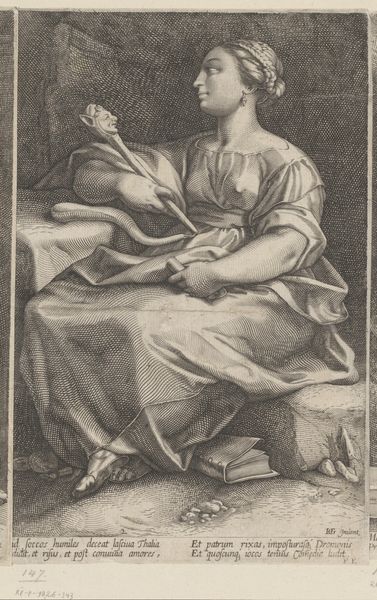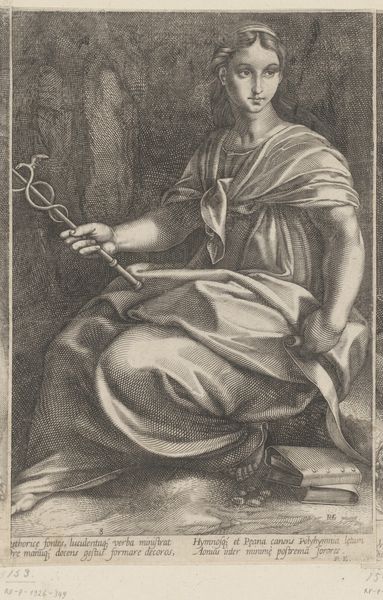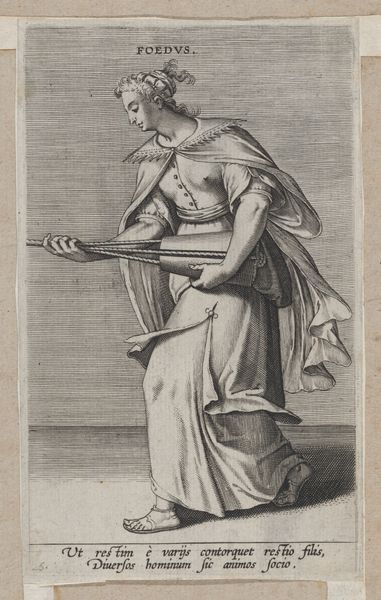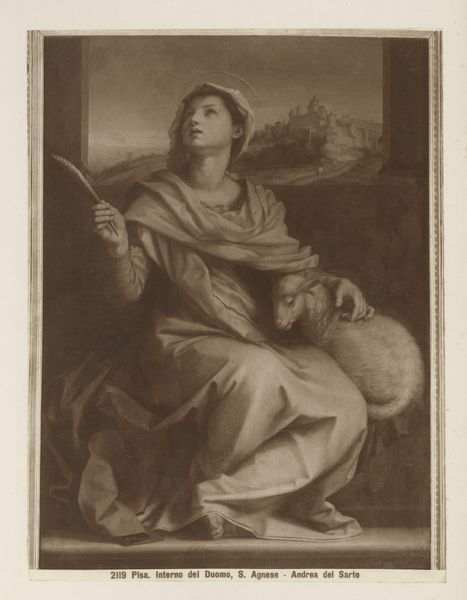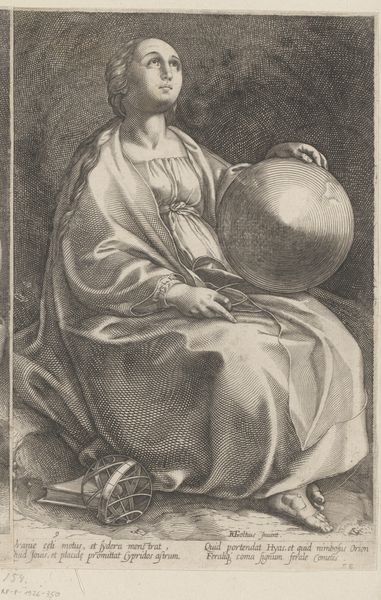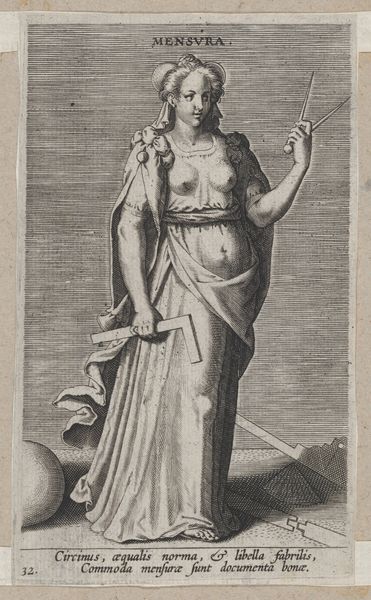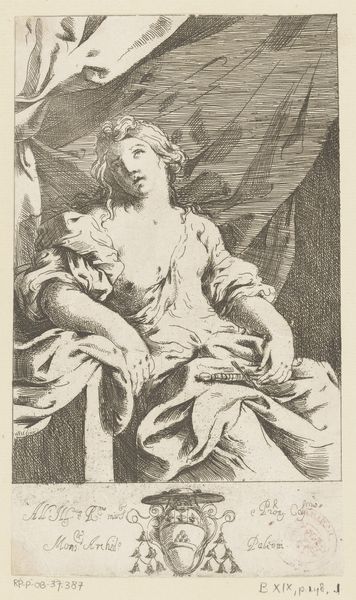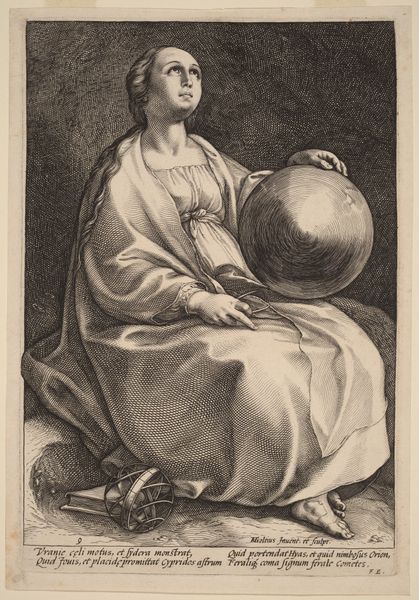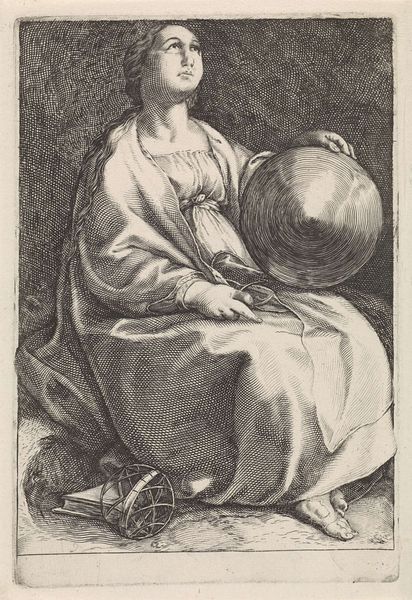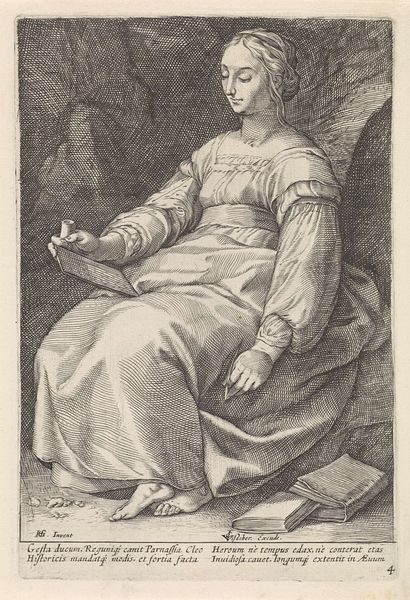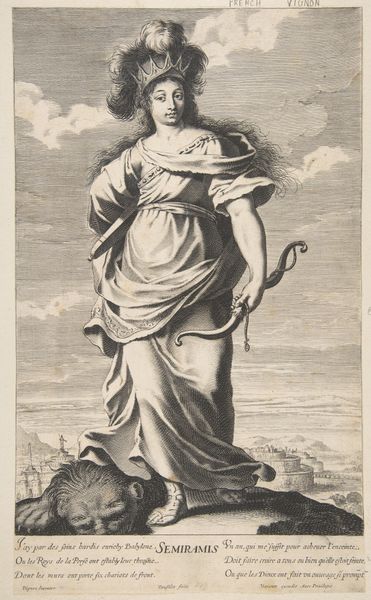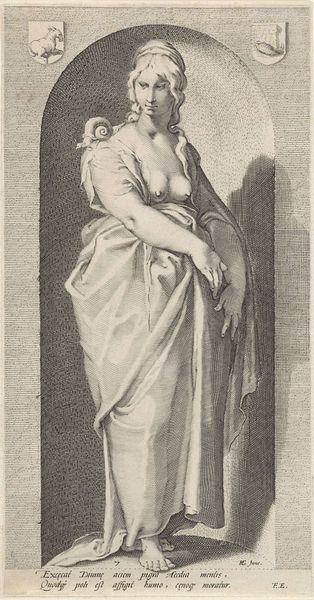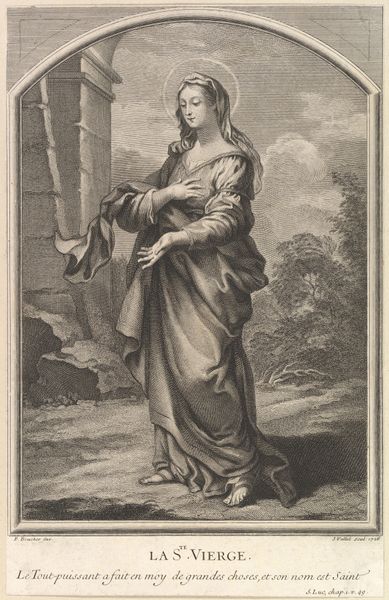
engraving
#
portrait
#
baroque
#
figuration
#
history-painting
#
engraving
Dimensions: height 240 mm, width 166 mm
Copyright: Rijks Museum: Open Domain
Editor: So, here we have "Terpsichore," an engraving dating back to the early 17th century, sometime between 1605 and 1638. It’s currently housed at the Rijksmuseum. It depicts a woman with a lute and a rather serious expression. It is intricate and looks almost like a photograph. What jumps out at you when you look at this piece? Curator: I’m immediately drawn to the material processes at play here. This isn’t just an image; it’s an engraving, mass-produced. Think about the labor involved, the skilled artisan meticulously etching the image onto the plate. Consider the intended audience: who had access to these engravings, and what was their purpose? Was this intended as high art, or more of a decorative, readily available item? Editor: That’s interesting. I hadn’t thought about the process itself so much. The figure, Terpsichore, is very idealized. Does the material context change how we read her portrayal? Curator: Absolutely. We can't divorce the idealized figure from the material conditions of its production and distribution. Who is she for, really? An engraving makes art more accessible, but does it also democratize the *representation* of idealized beauty? Or does it further solidify those ideals through widespread consumption? Is there commentary in making art more readily accessible or is it simply commercialism that should affect how the art is percieved? Editor: I see what you mean. The very act of creating multiples, of making this image available to a broader audience, influences its meaning and impact. I guess understanding the *how* and *why* of its creation is key to truly appreciating it. Curator: Precisely! We begin to see how the artistic expression blends and becomes tied to both economic forces and broader social values of the era. What were those societal views and are we perpetuating those now or are we moving forward?
Comments
No comments
Be the first to comment and join the conversation on the ultimate creative platform.
